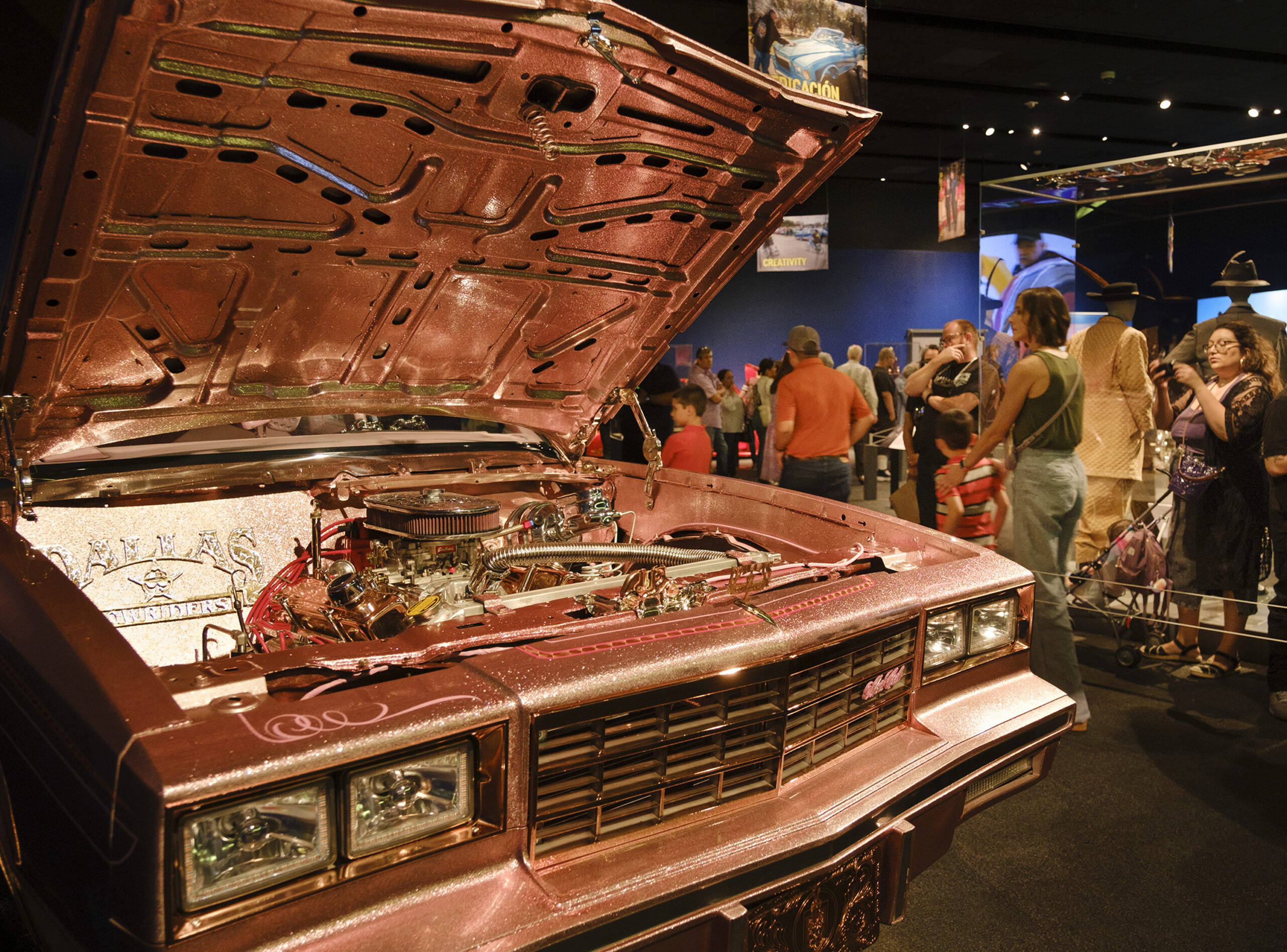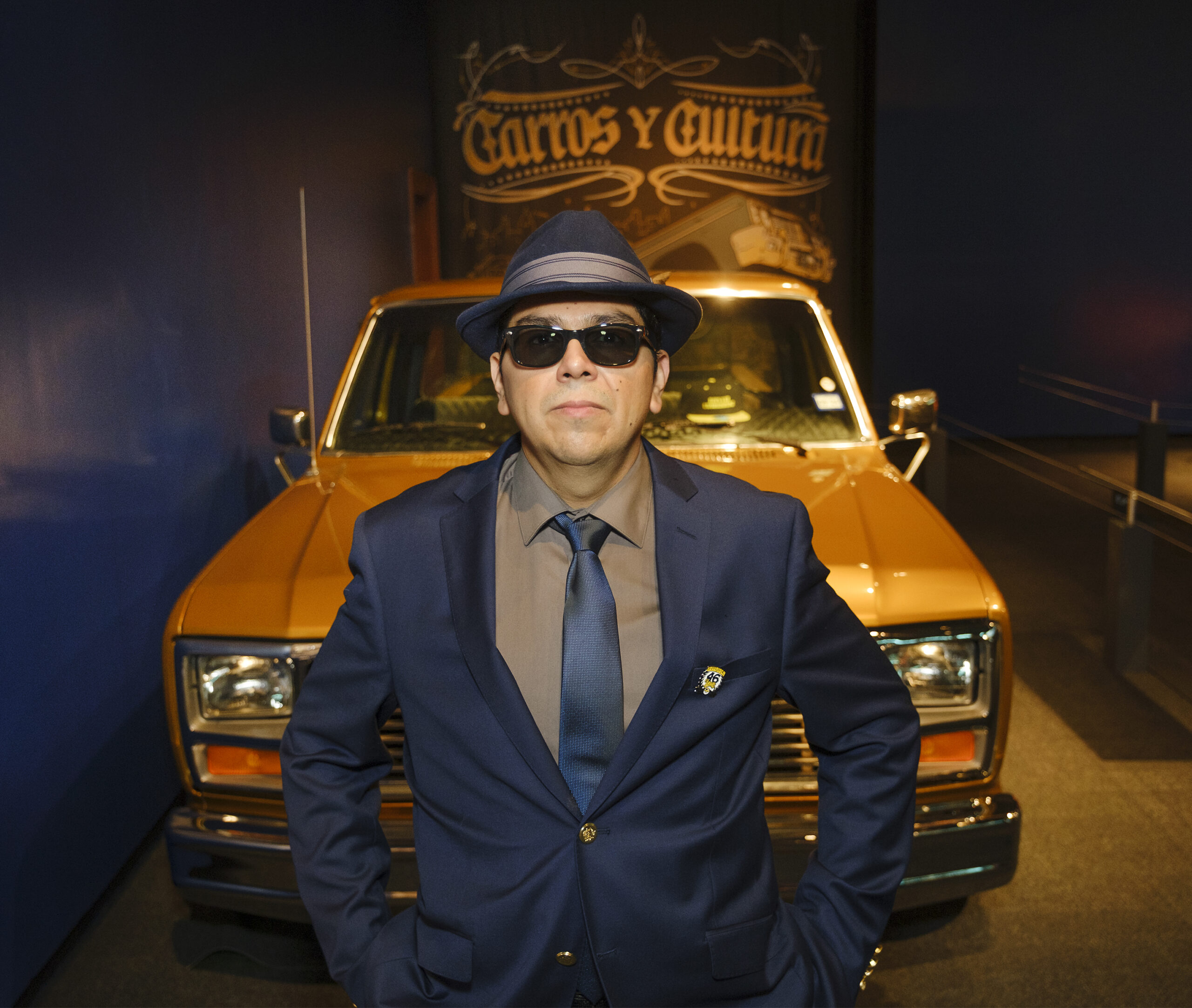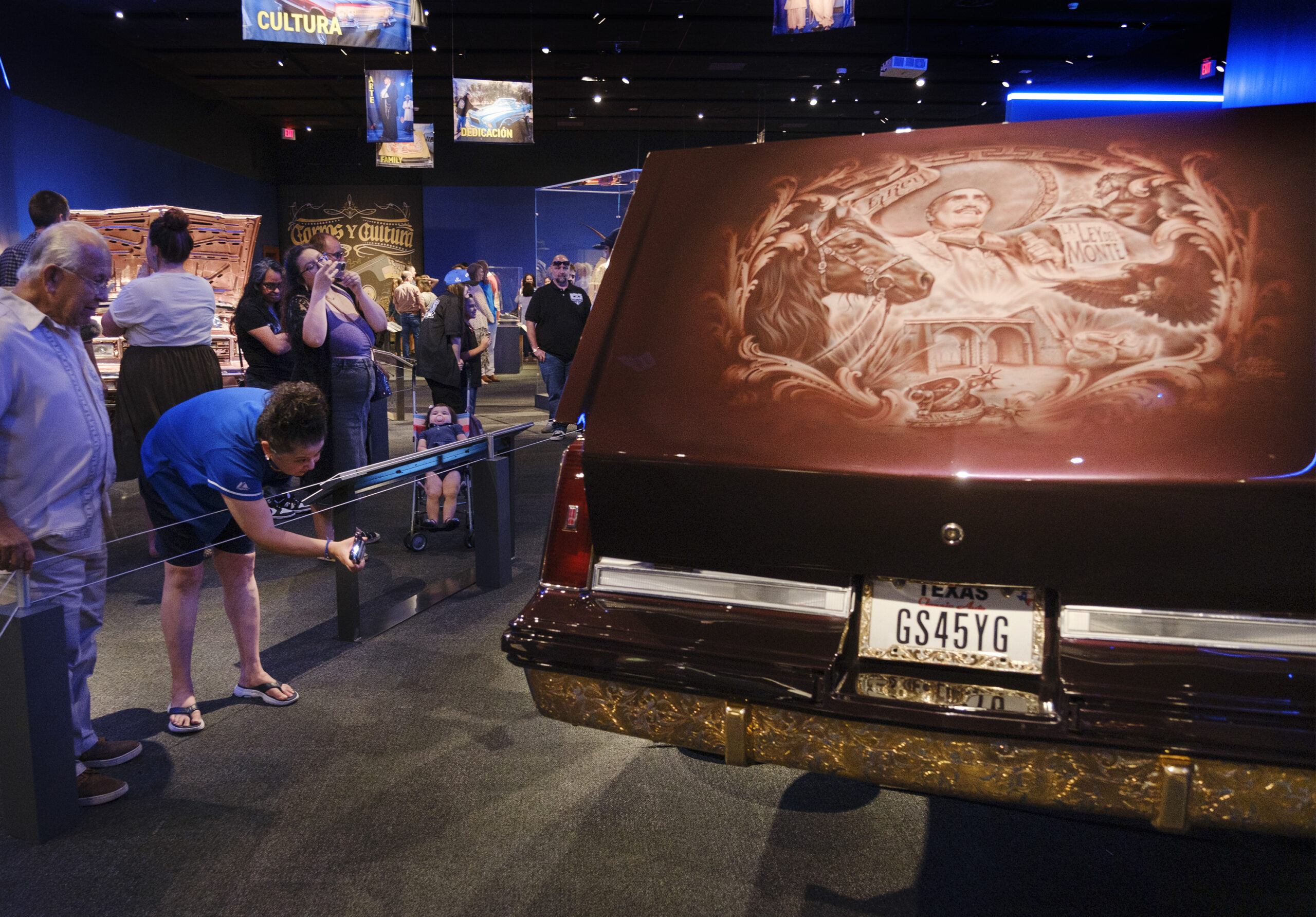Chuy Martinez’s sparkling blue 1975 Monte Carlo with multicolor stripes has been with him since he was 17. He saved up for the car, which looked nothings like it does today, by working jobs with his dad’s plumbing company.
When asked to describe the car, he laughs – there’s a lot of detail to go through: from the paint job to the chrome-engraved 24k gold plating on not just the bumpers, but to the specially-made one-of-a-kind hydraulics system that allows the lowrider to go up and down.
The ’75 Monte Carlo, is called “The Blue Monte.” It’s one of seven lowrider vehicles featured at the The Bullock Texas State History Museum’s new exhibit “Carros y Cultura: Lowriding Legacies in Texas.” The exhibit in Austin is open now and runs until Sept. 2.
“I’m real proud. I mean, that’s the Mexican culture,” Martinez said. “Being a lowrider, keeping your culture – that makes you feel good and I’m proud of it. I’m proud and glad to have my car here in a museum.”



















